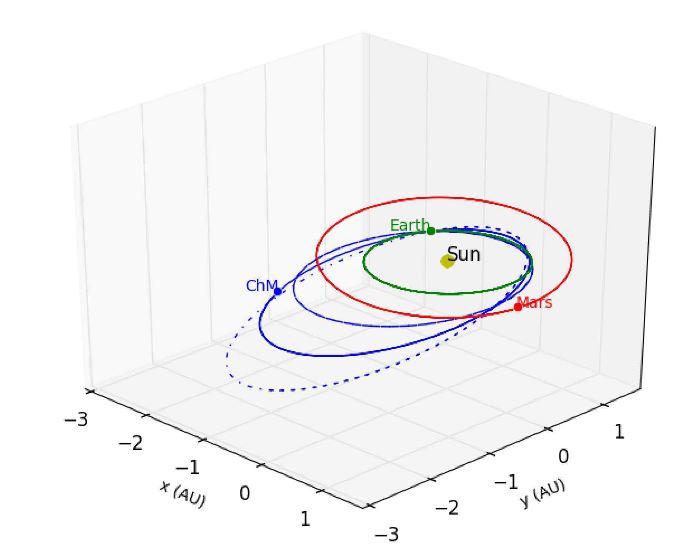A fireball streaking across the sky as seen from a driver's dashboard. via
Advertisement
The figure above from Zuluaga and Ferrin's paper shows how they triangulated the path of the meteorite via various dashcam perspectives. They include "the Revolution Square at Chelyabinsk (C), the Korkin metropolitan area (K) and Lake Chebarkul (L). The brightening point (BP) and the fragmentation point( FP) are the points of the trajectory seen from Chelyabinsk and measured using the shadow cast by the poles at the Revolutionary Square."
Advertisement
